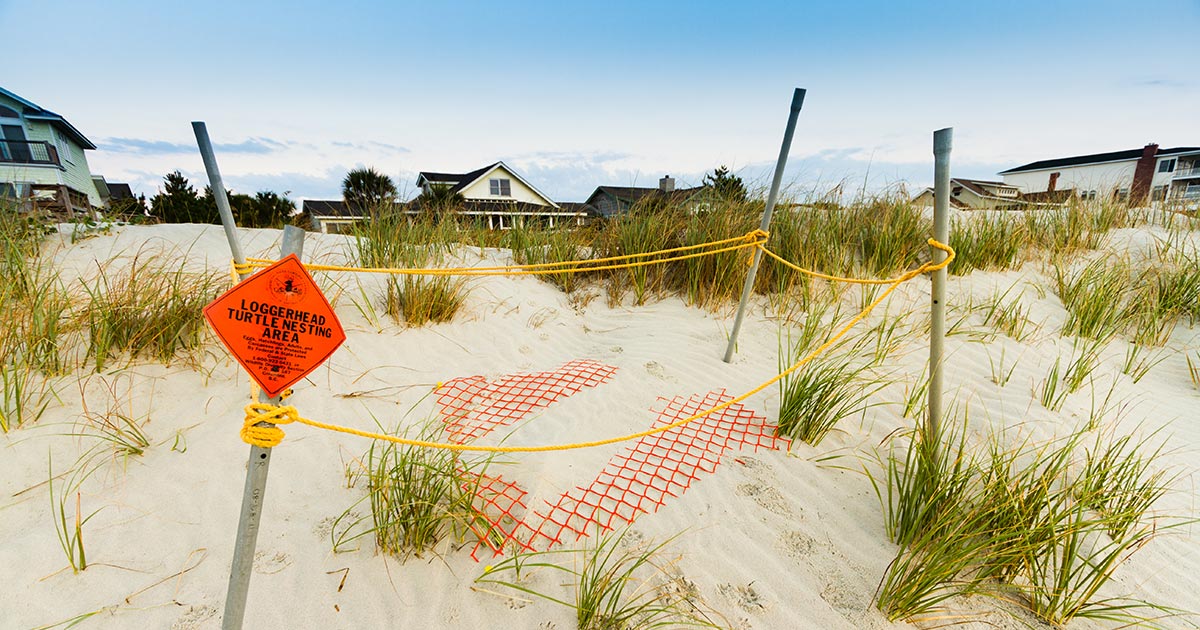Wildlife Protection
Here at JEA, we work hand in hand with various local, state and federal agencies to help protect Northeast Florida’s threatened and endangered species. We manage our assets and growth to encourage sustainability of the surrounding natural habitats. JEA protects and maintains the health of over 1000 acres of forested wetlands in Northeast Florida through conservation, monitoring and enhancement programs. We ensure the protection of threatened and endangered wildlife and their habitats while serving our growing communities water, sewer and electric needs.
Northeast Florida Habitats
JEA has recorded conservation easements to protect the head waters of Yellow Water Creek and Julington Creek and a tributary to Black Creek. The utility has also constructed new hardwood wetlands within the Dunns Creek and Nassau River basin watersheds and tributaries flowing into Julington Creek. These easements and created wetlands help protect precious habitat in the communities we serve and minimizes impacts of population growth in Northeast Florida.
Manatees
The Florida manatee is a large marine mammal that can reach around 3500 pounds and grow more than twelve feet long. While these “Gentle Giants” were once endangered, their population has increased over the past few decades and they are now listed as “threatened” in the US. For most of the year Florida manatees are widely dispersed throughout or community’s waterways. During the winter months in Northeast Florida, these manatees head for the warmer waters of our natural spring system.
JEA has worked collaboratively with the US Fish and Wildlife Service, the Florida Fish and Wildlife Conservation Commission and local universities to encourage successful winter migrations of manatees to these warmer waters. Extensive studies where undertaken to discourage these mammals from interrupting their natural migration and lingering near JEA thermal discharge sites along the St. Johns River. As depicted in the graphs below, manatee observations during the winter season at JEA facilities have decreased drastically due to construction of aquatic barriers. These decreased sightings and continued increases in manatee populations throughout the state are proof these collaborative efforts are truly paying off.
Gopher Tortoises
In Northeast Florida, both gopher tortoises and their burrows are protected by state law and relocation permits must be obtained from the Florida Fish and Wildlife Conservation Commission before disturbing burrows due to construction activities. JEA has saved over 190 gopher tortoises from harm during utility construction through local relocation activities and modification of construction work practices.
Gopher tortoises relocated from H2.0
Gopher tortoise relocated from Cedar Bay Wastewater Reclamation Facility
Annual Bird Count
Volunteers from JEA’s Environmental Group join forces each year with the Duval Audubon Society to count birds at JEA’s Northside Generating Station.
More on Duval Audubon Society
Ospreys
Ospreys build their nests by placing large sticks atop tall trees, utility poles, channel markers and manmade platforms. Here at JEA, our Energy Department regularly relocates osprey nests from electric power lines and substation infrastructure to limit power outages and harm to the ospreys themselves. This activity has become so common that ospreys have adapted to artificial nest sites and now nest in areas once considered unsuitable.
Shielding Lights for Sea Turtles
Beaches in Northeast Florida are a major nesting ground for loggerhead sea turtles. For this reason, the U.S. Fish and Wildlife Commission conducted a beach lighting survey of the area. Artificial lighting affects the survival of sea turtles that hatch on the beach. The hatchlings usually emerge at night and crawl toward the brightest horizon, which is the ocean. But artificial lights confuse the hatchlings and cause them to crawl toward roads and away from the ocean. The survey suggested there were seven lights in Atlantic Beach that needed "turtle shields" to keep light from dispersing and confusing the hatchlings.

The City of Atlantic Beach contacted JEA with a request for the turtle shields and they were installed in December 2012 with JEA assuming the cost of labor and installation, while the City of Atlantic Beach agreed to pay for the shields.
Striking a balance between providing reliable electric, water and sewer services and ensuring that our environment is protected and preserved is at the very core of our business. We work daily to ensure full compliance with environmental laws and regulations and are dedicated to continually improving the environmental performance of our facilities and operations.
Read More About Our Environmental Commitment
Explore Solutions and Save
Learn about all the ways JEA helps Northeast Florida families, businesses and our community thrive and how we can help you do more.
Related Links
-
About
JEA is located in Jacksonville, Florida, where we proudly serve an estimated 524,378 electric, 399,007 water, 318,860 sewer, and 28,240 reuse water customers.
-
Environment
JEA strives for environmental excellence and to be a responsible steward of the environment. As a community-owned, not-for-profit utility, we are committed to meeting our customers’ energy, water and sewer service needs in a manner that is environmentally, socially and economically sustainable.